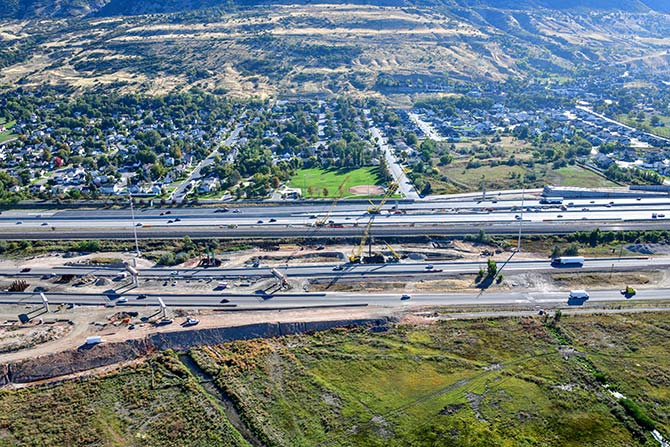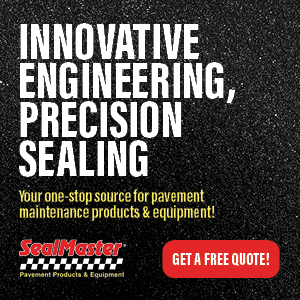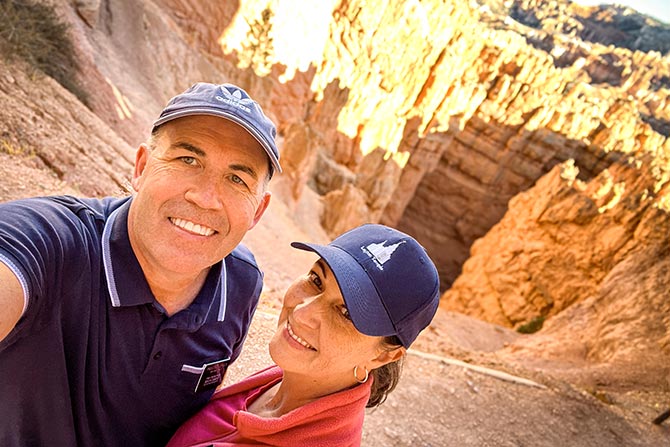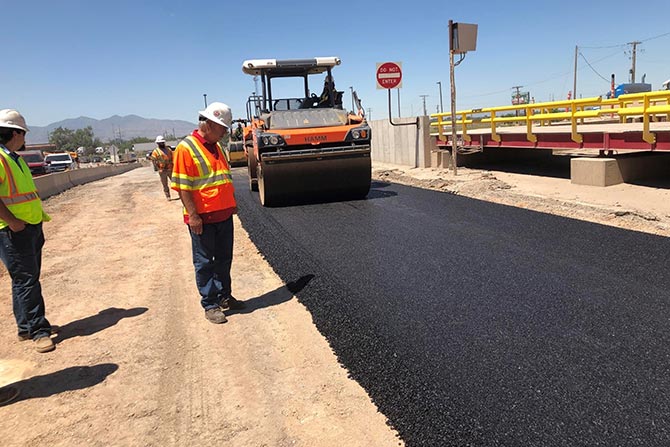Over the past few years, Staker Parson Materials & Construction has had the opportunity to produce and place HiMod asphalt on numerous projects. After completing HiMod asphalt at the Wendover Port of Entry and on the West Davis Corridor projects, we shared our “lessons learned” with UDOT’s State Asphalt Engineer Howard Anderson and Region 2 Materials Engineer Lonnie Merchant with the process of testing and ultimately bringing HiMod asphalt onto Utah roadways.
After UDOT’s years of testing, in June of 2021, the I-80 eastbound port of entry in Wendover, Utah, was chosen as the HiMod test site. The Staker Parson team got to work laying a single, super-thick lift of HiMod. “I was a little skeptical of laying six inches of asphalt in one lift, as four inches is typically the maximum lift allowed by spec that had been done in the past,” said Jonas Staker, Staker Parson Materials & Construction construction manager of the Southern Wasatch Front. “However, I knew that Howard and the others had been testing these super-thick lifts for many years. I had the absolute confidence that it was going to work.”
The test was successful, to say the least. Maintaining the Wendover Port of Entry pavement has been difficult for the department to manage, however, three years in, the HiMod asphalt is performing beautifully. (Please keep in mind our Port of Entry asphalt was using HMA mix, not OGSC.) With a typical OGSC binder, the asphalt starts to fail at 40,000 passes. That becomes an issue on high traffic roads. From what we’ve heard, UDOT has tested using HiMod binder in OGSC and the results showed that the asphalt could withstand up to 1.2 million passes. Those are impressive results.
Another benefit to HiMod is that, from an aggregate standpoint, there is limited waste. “SMA is a great product, but it doesn’t use all of the aggregates out of our pit so there is a lot of waste,” Jonas said. “With HiMod, we’re using all the aggregates in the quarry. It’s much more economical and makes much more sense.”
In the spring of 2021, Staker Parson started work on the West Davis Corridor project. The project called for rubblizing concrete on the I-15 tie-ins, then have sections graded and then repaved, all in the same six-hour shift. “We talked to the state and asked what they thought about using a HiMod asphalt overlay in the areas that had variable depth,” Jonas said. “With traditional asphalt, you can do some variable depth paving, but there’s a four-inch one-lift limit.” The state gave approval to move ahead.
Staker Parson used their 3D pavers on that job. The screen on the 3D pavers would adjust automatically to the depth, laying two inches on one side of the screen and three‑and‑a‑half inches on the other. It would taper into two inches deep and come up out of four inches deep. “Being able to have that variability to go as thick as we could with HiMod was wonderful,” said Jonas.
With the amazing results HiMod has consistently shown, it’s safe to say that it is here to stay. Staker Parson is getting ready to start a UDOT job in Region 3 on U.S. 6. Using HiMod, they are planning to lay five inches in one pass, reducing the time their workers have to be on the heavily trafficked road. They are also laying HiMod on I-80 around Milepost 41, with more jobs scheduled out.
“It’s really neat to have people who are so engaged in their job and innovative — from the state level to contractors — and are willing to go out and give something new a shot, like HiMod. That is why our roads are done the way they are, with walking bridges for pedestrians and such. It’s a neat environment to be in,” said Jonas. “We are always looking for new ways in our industry: better ways to pave, to improve safety, to increase the quality, durability and longevity of the pavement. That is what makes this job fun!”








